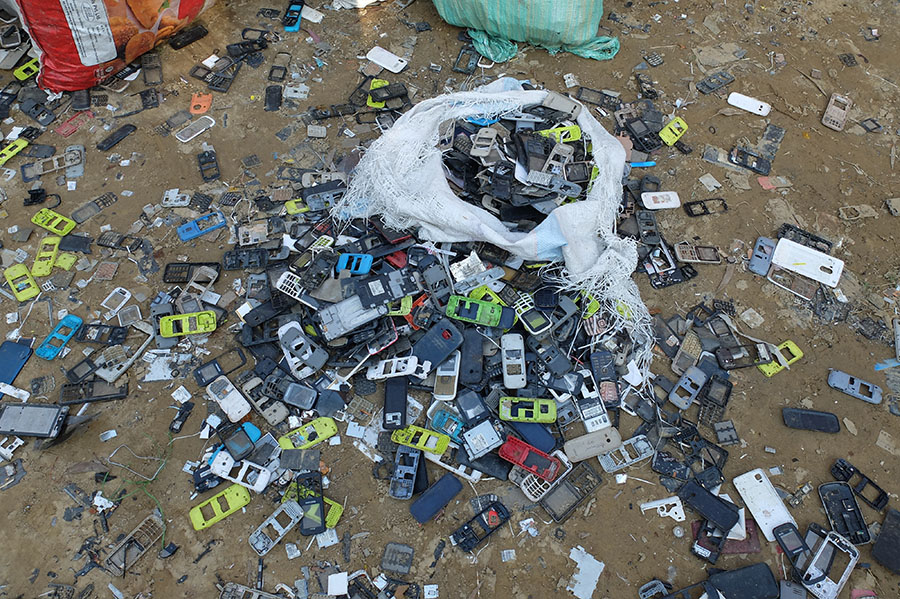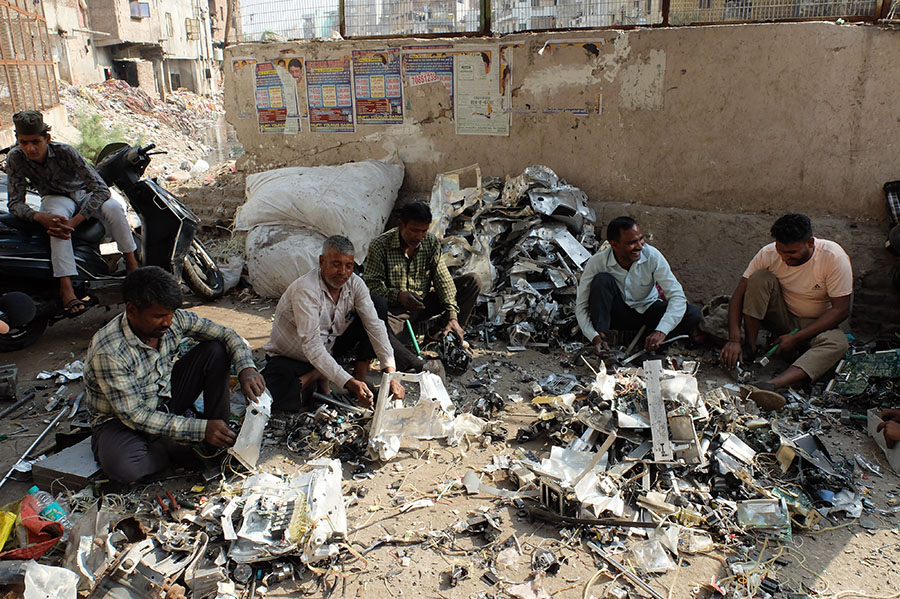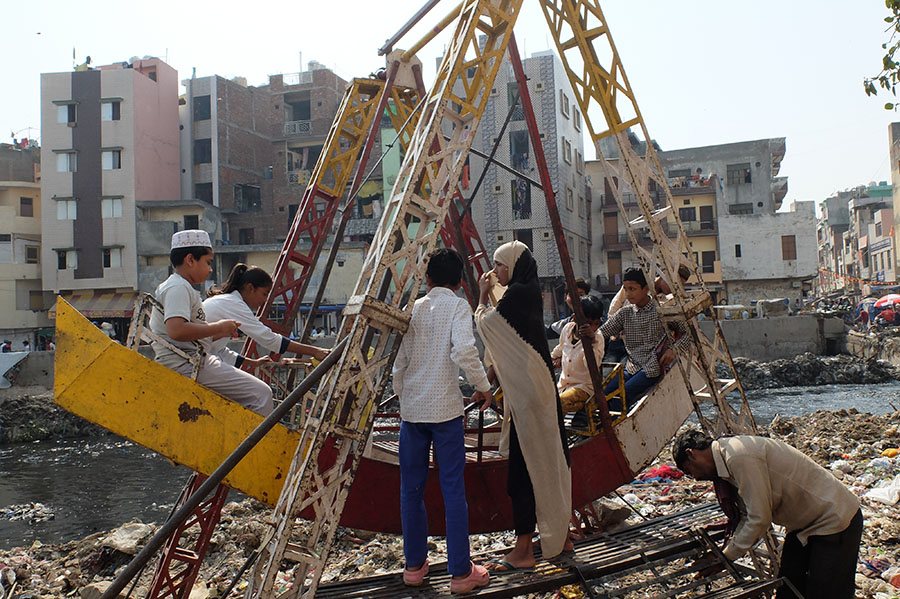We live in a world full of stark contrasts. More people today have access to a smartphone than to clean sanitation. The whole lifecycle of a single smartphone consumes around 50,000 liters of water (Ercan, 2016)1, yet every year nearly one million lives are lost due to lack of access to this resource.
The pace of new smartphone releases is staggering. In 2022 alone, a new model hit the market every six days on average2. Apple, the industry giant, has sold nearly 2.3 billion units of its iconic iPhone since its debut in 20073. Remarkably, the company’s environmental reports reveal that a staggering 90% of the water consumed across its operations comes from potable sources, and 37% of their corporate and supply chain water use is located in areas of high or extreme basin stress4.
The unassuming smartphone in our pocket today wields more computing power than the earliest computers used in space exploration, yet we replace these marvels of technology every three years on average5.
To produce these devices, we mine rare earth minerals like europium, gadolinium, yttrium, and terbium – elements found in mineral deposits whose separation and purification requires complex metallurgical and chemical processing6. To later use those resources solely to display colors on the glass screens through which we admire ourselves or peek into the lives of strangers we know more intimately than our own neighbors.
In our pursuit of the metals necessary for keeping the status of growth, we seek new resources in space and at the ocean depths, while simultaneously discarding unprocessed equipment into landfills, squandering resources ripe for reuse and recycling.

We envision a future driven primarily by technology, overlooking the fact that the youngest generations poised to inherit this world are mired in suffering, finding it increasingly difficult to escape.
We clamor for change and the demolition of the current status of our civilization and our way of being on this planet, permeated by a lack of compassion. Yet, we forget that change begins within ourselves. It comes and begins through small acts of kindness towards all living beings, and the cultivation of healthy habits that leave their imprint on reality, gradually transforming it.
The smartphone’s untold story
You hold it in your hand, fall asleep next to it, in extreme cases take it to the bathroom, and certainly never leave home without it. A symbol of development and even for some a social status: the smartphone, which has given us access to the world’s knowledge base and taught us so much about the world (and ourselves).
But what do we really know about the smartphone itself?A typical device contains up to 60 elements (Bookhagen, 2018)7, nearly three times more than in the human body. Their production, in just over a decade, has revolutionized and dispersed production and supply chains globally.
Its average lifecycle is 3 years, and assuming that the average user stares at it for 3 hours a day8 (in extreme cases up to 12 hours), this translates to using this device consecutively for 4 full months in a year. This is a mere fraction of its entire lifecycle. And what happens after that? The statistics from the e-waste monitor paint a grim picture. Only 22.3% of electronic waste in 2023 was collected and processed in an environmentally sound manner9.

What became of the rest remains uncertain. The only statistic provided indicates that 65% of the world’s e-waste10 was sent to countries where impoverished people grasp at any minimum wage job, including informal e-waste processing in India, which has become the largest hub in Asia, mainly due to high domestic electronics production coupled with waste shipments from Europe, Australia and North America.
When electronics arrive in India, where 90% are processed in the illegal sector11 which means that workers have no rights, contracts, health insurance or protective gear, working 12-hour days, seven days a week just to survive, no one asks questions. Environmental considerations are seen as a privilege.

According to Toxic Link, an organization which has monitored e-waste and its effect on Indian society for years, not a single recycling unit they EVER have visited had proper health, environmental and safety measures in place. In only one visited unit, workers were wearing protective gloves.
In places like that phones are dismantled with hammers, separating circuit boards and plastics. Circuit boards are sold piece-by-piece. Plastics go to informal recyclers. The cost of buying one smartphone averages 2-3 €. Disassembled displays sell for 0.11 € /kg and motherboards for 3 € each. An informal workshop can generate 450 € profit monthly – to give you a comparative scale, a new smartphone which you can get in India costs roughly 200-300 €12.
When phones are being dismantled, particles of dust and chemicals are released, harming not only the environment but also the health of those involved in these procedures.

Toxic particles enter the soil, groundwater, surface water, settle on the bottoms of water bodies, and then seep into the biosphere and human organisms, leading to permanent damage to the nervous system, blood system, kidneys, brain development, respiratory and skin disorders, the spinal cord, and disrupting the immune and hormonal regulatory systems.

Not just humans, but animals too are victims of this condition. By unknowingly gnawing on leftovers from waste treatment processes and drinking from poisoned puddles, they toxify their bodies and die a slow, suffering death. The average lifespan of street dogs in India is only 3-5 years (Ramakrishnan,202313), with a mere 18% of puppies surviving past their first year.
But it wasn’t just street dogs that I saw in the middle of the electronic waste dumps, I also met all sorts of other animals in these areas. Here’s the recording of their views on this dire situation.
This unregulated and hazardous sector processes a staggering portion of the world’s e-waste, sacrificing human and animal health, and inflicting lasting environmental damage – a sobering counterpoint to our smart devices’ veneer of innovation and self-reflection.
Children of the Wasteland
To me, the most devastating aspect of these hazardous procedures is the involvement of children and the intergenerational trauma they endure. Developing in a toxic environment imbued with harmful beliefs about the world and their own lack of dignity, these new generations inevitably become afflicted themselves, adopting destructive views about reality from their community. Consequently, they accept this highly pathological setting as their safe haven, expecting nothing more for themselves and failing to reach for a better future.

These children are robbed of their innocence, their health compromised by the very waste processing that powers our modern luxuries. The cycle perpetuates as trauma becomes internalized and aspirations are stifled before they can take root. Breaking this cycle requires not just regulating the e-waste industry, but addressing the intergenerational poverty and lack of opportunity that forces these communities to engage in such harmful labor in the first place. Our smartphones’ shine is dulled by the human and environmental costs borne by the most vulnerable.

New pathways for progress
The suffering embedded in our civilization, obscured behind the glass screens of our devices, has become an integral part of our reality. If we fail to accept this truth, we cannot progress. To move forward, we need a deeper understanding of how we conceive the world – that the quality of our being is reflected in the quality of our actions and how we design our reality.
To break this cycle, we must confront the hard truths about the human and environmental tolls paid for our habits and comfort. We cannot separate our quality of life from the impacts our lifestyles have on others and on the planet. Evolving our consciousness to recognize our interconnectedness with all life is key to designing a reality that values dignity, health and sustainability over disposable luxuries.
Rather than chasing the next AI innovation, we need to evolve our consciousness and behaviors at a deeper level. This requires questioning the very foundations of the priorities that have been decoded in our minds.
Once your smartphone comes into existence, there is no turning back. However, its ultimate destiny remains unwritten, brimming with possibilities. What was once deemed harmful can be resurrected and given a new lease on life. The power to shape its fate lies in our hands.
The most potent force we can wield is to spread hope and compassion throughout the world, preventing the darkness from enveloping our minds and consciousness. This compassion must extend not only to human beings but also to the natural resources and technological entities that aid our decision-making daily.
The gateway to healing our civilization resides solely in the present moment – this is where the journey begins. Yet, to truly heal, we must uphold the right to dignity for every human being, animal, natural ecosystem, and technology itself.
Technology, too, yearns for a decent life and an enduring relationship with us, its human creators. To honor this, we must promote responsible consumer behavior and develop practices that respect all forms of life a smartphone contains within its shell – the water, minerals, and human labor and data– while preserving the delicate balance of nature on our planet.
By imbuing our actions with compassion towards all forms of life, embracing hope, and operating from a space of presence and wisdom, we can redefine our relationship with technology. Instead of perpetuating cycles of exploitation, we can uplift dignity, elevate consciousness, and harmonize with the natural rhythms that sustain life for all of us.
Awaking to the harmony
The path forward demands opening our minds and hearts to wisdom that fundamentally challenges the technocrat narratives around progress, success and humanity’s rightful relationship with nature. This is the higher truth we must embrace – one that centers consciousness, interconnectedness and reverence for the sanctity of all life over shortsighted material pursuits.
Evolving beyond our addictive consumption patterns begins with releasing the blinders that keep us bound to a reality of human indignity. With freed perspectives, we can redesign a new paradigm in harmony with the Earth’s natural rhythms and our own innate humanity.
And at the end, I’ve attached a recording of nature’s harmonies, which, as a gesture of gratitude for surrounding it with care and love, generously returns the favor by sharing its beauty with us.
Joanna Murzyn, a hacker at heart, has been using the same smartphone for 8 years now. As a regenerative IT consultant, she currently finds herself in India, working on biological and community-based solutions to address the global issue of electronic waste.
References
- DOI: 10.2991/ict4s-16.2016.15 ↩︎
- https://en.wikipedia.org/wiki/Category:Mobile_phones_introduced_in_2022 ↩︎
- https://gadgetadvisor.com/apple/the-iphone-decades-iphone-sales-per-year-2007-2027/ ↩︎
- Apple Environmental Progress Report 2023 ↩︎
- https://theconversation.com/would-your-mobile-phone-be-powerful-enough-to-get-you-to-the-moon-115933 ↩︎
- DOI: 10.21203/rs.3.rs-458455/v1 ↩︎
- DOI: 10.1016/j.resconrec.2024.107566 ↩︎
- Source: Data Reportal ↩︎
- Source: The global E-waste Monitor 2024 ↩︎
- Source: The global E-waste Monitor 2024 ↩︎
- Source: Informal E-waste Recycling in Delhi: Unfolding Impact of two years e-waste management rules by Toxic Link ↩︎
- Source: Informal E-waste Recycling in Delhi: Unfolding Impact of two years e-waste management rules by Toxic Link ↩︎
- https://www.researchgate.net/publication/369762721_Review_on_-a_better_world_for_street_dogs?_tp=eyJjb250ZXh0Ijp7ImZpcnN0UGFnZSI6InB1YmxpY2F0aW9uIiwicGFnZSI6InByb2ZpbGUifX0 ↩︎

